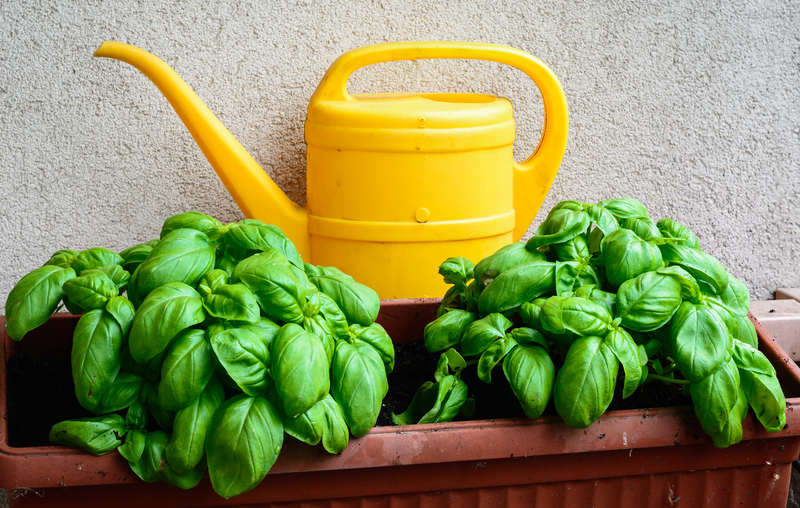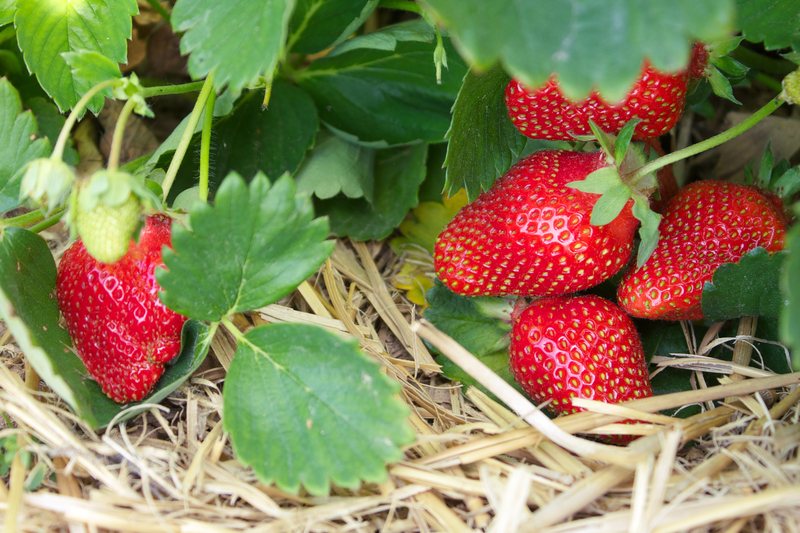Explore the Latest Hedge Trimming Shapes and Techniques
Posted on 28/06/2025
Explore the Latest Hedge Trimming Shapes and Techniques
Transforming your garden into a well-manicured masterpiece requires more than just regular maintenance--it's about embracing modern hedge trimming shapes and techniques. As homeowners increasingly appreciate the aesthetic and ecological value of their landscapes, the demand for innovative approaches to hedge care has soared. In this comprehensive guide, we delve into the latest trends in hedge shaping, highlight cutting-edge trimming techniques, and reveal how you can turn your green spaces into the envy of your neighborhood.

Introduction to Modern Hedge Trimming
Gone are the days when hedges were merely utilitarian boundaries. Today, they serve as vital elements of garden design, offering privacy, structure, and visual appeal. Modern hedge trimming techniques not only emphasize precision and health but also celebrate creativity. If you're eager to upgrade your outdoor living space, mastering contemporary hedge trimming and shaping methods is essential.
Why Upgrade Your Hedge Shaping Techniques?
- Boost Curb Appeal: Uniquely shaped hedges can dramatically enhance the overall look and feel of your property.
- Support Biodiversity: Updated techniques often consider ecological balance, encouraging the growth of habitat-friendly structures.
- Improve Plant Health: Proper modern trimming reduces stress for plants, making them stronger and more resilient against pests and diseases.
- Showcase Personality: Express your artistic flair through creative shapes and topiary forms.
Top Trending Hedge Trimming Shapes of 2024
The art and science of hedge design have evolved, and gardeners are now experimenting with a variety of shapes that go beyond the traditional straight line or perfect box. Let's explore the most popular hedge shaping trends you can try this season.
1. Geometric Marvels
Geometric shapes remain a timeless choice for hedge cutting styles, but they are now being executed with unparalleled precision. This year, look out for:
- Cubes and Rectangles: The classic hedge box receives a modern twist with razor-sharp edges and variable heights for visual drama.
- Spirals and Pyramids: Demanding greater skill, these shapes give an instant contemporary flair to gardens.
- Spheres and Semi-spheres: Rounded forms are softer on the eyes and require regular, even trimming for symmetry.
2. Freeform and Naturalistic Styles
Moving away from rigid forms, naturalistic trimming techniques are gaining popularity. Some of the latest hedge trimming approaches include:
- Cloud Pruning: Inspired by Japanese Niwaki, this style features a cluster of soft, billowy forms that mimic clouds, bringing tranquility to any garden.
- Soft Waves: Flowing, curved lines follow the natural growth of the hedge, giving a dynamic yet relaxed appearance.
- Tiered Layering: Designing hedges in multiple levels creates depth, perfect for borders and focal points.
3. Artistic Topiary
Topiary has been revolutionized with the help of new tools and guidance. Modern topiary incorporates:
- Animal and Object Shapes: From peacocks to chess pieces, topiary designs add unique character to landscape exhibits.
- Themed Scenes: Skilled gardeners sculpt scenes or words, making a garden truly memorable.
- Abstract Forms: Smooth, endless curves or striking silhouettes push creative boundaries.
Cutting-Edge Hedge Trimming Techniques
With the advent of new tools and expert knowledge, the latest hedge cutting techniques combine efficiency with artistic flair. Here are some of the top methods leading the gardening scene in 2024:
1. Laser-Guided Trimming
This innovative method utilizes laser levels and guides to ensure
2. Battery-Powered Trimmers
Gone are the days of heavy, noisy petrol trimmers. Modern battery-operated trimmers offer:
- Eco-friendly operation with zero emissions
- Quiet performance ideal for residential neighborhoods
- Lighter weight for greater control and reduced fatigue
3. Template and Stencil Use
For complex topiary forms or repeatable designs, templates made from durable plastic or metal help guide each cut. Stencils are especially popular for themed events or show gardens, ensuring each letter or emblem looks identical.
4. Hand Shearing for Perfectionists
The best results sometimes come from the oldest tools. Hand shears offer unmatched control, making them ideal for finishing touches on delicate topiary or achieving a velvety surface on fine-leaved hedges.
5. Regenerative and Selective Pruning
To combine health with aesthetics, many gardeners now practice selective cutting--removing only certain branches to encourage denser, more robust growth without sacrificing shape. This technique is essential for rejuvenating older hedges and ensuring long-term vitality.
Tips for Mastering Modern Hedge Shapes and Trimming Techniques
While learning advanced hedge shaping methods can take time, a few best practices ensure professional-looking results:
- Invest in Quality Tools: Sharp blades and ergonomic handles make for clean cuts and fewer mistakes. Keep all equipment well-maintained.
- Plan Your Cuts: Always sketch your design or outline the intended shape with string, stakes, or chalk beforehand. Measure twice, cut once!
- Work With the Seasons: Most hedges are best trimmed in late spring or early summer. Be sure to research the species-specific timing for your plants to avoid stress or disease.
- Prioritize Plant Health: Disinfect tools to prevent disease spread, and never remove more than one-third of the plant at a time.
- Step Back Often: Regularly review your work from a distance to ensure symmetry and maintain perspective.
- Consider Light and Airflow: Taper hedge sides slightly so sunlight reaches the base, and avoid overcrowding for improved air circulation.
Choosing the Right Hedge Species for Creative Shaping
Not all hedges respond equally well to trimming and shaping. For modern topiary and geometric hedging, select species renowned for their dense, fine foliage. Some of the best options include:
- Boxwood (Buxus sempervirens): The classic choice for its small leaves and slow growth.
- Yew (Taxus baccata): Tolerates heavy shaping and grows back reliably.
- Privet (Ligustrum): Hardy and quick-growing, suitable for tall, formal hedges.
- Hornbeam (Carpinus betulus): Offers lush foliage and strong structure.
- Holly (Ilex): Ideal for evergreen displays and wildlife habitats.
- Lonicera nitida: Perfect for small-scale intricate topiary work.
Tip: For fluid, naturalistic styles, even flowering shrubs and deciduous species like beech or viburnum can be trained with patience and skill.
Maintaining Your Modern Hedge Designs
A beautiful hedge is an investment--regular care is a must to keep its shape and health intact. Here's how to keep up with your latest hedge trimming techniques year-round:
- Routine Inspections: Check for signs of pests, disease, or dieback between trimmings.
- Feeding and Watering: Neatly shaped hedges need adequate nutrients. Apply slow-release fertilizer early in the growing season.
- Irrigation: Hedges in formal patterns can be prone to drought stress. Watering deeply but infrequently encourages deep roots.
- Seasonal Touch-Ups: Quick trims through the summer will keep geometry crisp; avoid major cuts in late fall to reduce winter vulnerability.
Common Mistakes to Avoid in Hedge Shaping
Even experienced gardeners can make errors when trying out new hedge cutting styles and techniques. Steer clear of these frequent pitfalls:
- Trimming in Direct Sunlight: Sunburned cuts can damage plant tissues and invite disease.
- Ignoring Plant Growth Patterns: Trimming against natural growth results in patchiness or bare spots.
- Creating Top-Heavy Shapes: Always taper the upper sections to avoid shadowing the base.
- Over-Complicating for Beginners: Start simple and build your confidence before attempting advanced topiary or geometric designs.
- Using Dull Blades: Ragged cuts slow healing and harm the plant.
Eco-Friendly Trends in Hedge Trimming
Sustainability is at the forefront of modern gardening. New sustainable hedge trimming techniques include:
- Wildlife Corridors: Incorporating gaps and native hedging species supports birds, pollinators, and small mammals.
- Mixed Hedging: Combining different plants for a varied, more resilient barrier.
- Electric Tools: Swapping gas for battery power reduces noise and emissions, aligning with green living goals.
- Compost Clippings: Recycling trimmings into mulch or compost benefits your soil and the environment.

Inspiration: The World's Most Unique Hedges
Looking for new ideas? Take a leaf from famous gardens around the world, where the latest hedge trimming shapes and methods are on grand display:
- Levens Hall, England: Home to the world's oldest topiary garden with intricate geometric structures.
- Chateau de Villandry, France: Famed for its ornate boxwood parterres and cloud-shaped yews.
- Marqueyssac, France: Offers over 150,000 hand-sculpted boxwoods in swirling patterns.
- Longwood Gardens, USA: Features themed topiary and tiered hedges along meandering paths.
- Private Urban Sanctuaries: Modern city gardens now showcase abstract and vertical hedge designs for compact spaces.
Conclusion: Elevate Your Garden with the Latest Hedge Trimming Innovations
The world of hedge trimming has never been more creative or more accessible. Whether you're a DIY gardener or a landscape professional, mastering the latest hedge trimming shapes and techniques can transform your outdoor spaces into living works of art. From geometric marvels to flowing naturalistic forms and sustainable practices, there is a technique for every vision and skill level.
Invest in modern tools, experiment with trending shapes, and keep your green boundaries both beautiful and healthy. As you explore the future of hedge design, you'll not only enhance your property's curb appeal but also foster a more vibrant and diverse garden ecosystem.
Ready to bring your garden to life? Start trimming, shaping, and sculpting today, and unlock the full potential of your hedges with the latest, most innovative techniques in the field of horticultural artistry!



